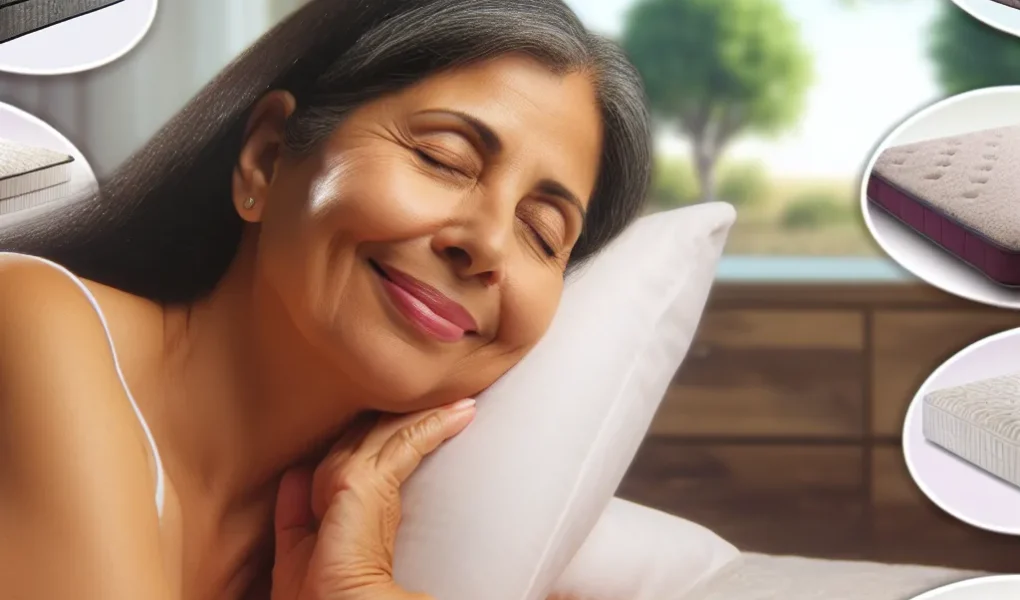Factors to Consider When Choosing a Mattress
When it comes to choosing the perfect mattress, there are several factors to consider in order to ensure a good night’s sleep. The first and most important factor to consider is your preferred sleeping position. Whether you sleep on your back, side, stomach, or a combination of these, the right mattress can provide the necessary support and alignment for your body.
Another crucial factor is the level of firmness. Mattresses come in various levels of firmness, from soft to extra firm. The ideal firmness is largely based on personal preference, but it’s important to keep in mind that different firmness levels are better suited for different sleeping positions.
Consider any specific health issues you may have, such as back pain or allergies, as these can also impact your choice of mattress. For instance, individuals with back pain may benefit from a mattress that offers extra support, such as a memory foam or hybrid mattress. Those with allergies should opt for a hypoallergenic mattress to minimize exposure to potential allergens.
Lastly, take your partner into account if you share your bed. Consider their sleeping preferences and any potential disturbances caused by movement transfer. Mattresses with motion isolation are a good option for couples, as they minimize the impact of movement, ensuring both partners can enjoy uninterrupted sleep.
By carefully considering these factors, you can make an informed decision when choosing the perfect mattress to suit your individual needs and preferences.
Understanding Different Mattress Types
When it comes to choosing the perfect mattress, understanding the different mattress types is crucial. With various options available on the market, it’s essential to comprehend the characteristics and benefits of each type to make an informed decision.
Memory foam mattresses are renowned for their body-contouring properties, providing excellent support and pressure relief. On the other hand, innerspring mattresses are known for their traditional bounce and ample airflow, making them a great choice for those who prefer a more classic feel. Hybrid mattresses combine the benefits of memory foam and innerspring mattresses, offering both support and responsiveness.
Latex mattresses are celebrated for their durability, hypoallergenic nature, and excellent responsiveness, making them a top choice for eco-conscious consumers. Additionally, airbeds provide customizable firmness levels, making them an ideal option for those seeking personalized comfort.
Understanding the nuances of each mattress type empowers consumers to select the most suitable option based on their unique preferences, such as preferred firmness, support, and potential health considerations. By delving into the specifics of each mattress type, individuals can ensure that they invest in a quality mattress that aligns with their needs for restful and rejuvenating sleep.
Finding the Right Mattress for Your Sleeping Style
When it comes to finding the perfect mattress, one of the most important factors to consider is your sleeping style. Different sleeping positions require different levels of support and firmness in a mattress in order to ensure proper spinal alignment and overall comfort. For those who sleep on their back, a medium-firm mattress is generally recommended to provide adequate support while preventing the body from sinking too deeply into the mattress. Side sleepers, on the other hand, often benefit from a softer mattress that can cushion the hips and shoulders, helping to alleviate pressure points. Stomach sleepers may find a firmer mattress more comfortable, as it can help keep the spine properly aligned. It’s important to take your preferred sleeping position into account when choosing a mattress to ensure a restful and rejuvenating night’s sleep.
Tips for Making Your Mattress Last Longer
When investing in a high-quality mattress, it’s essential to extend its lifespan as much as possible. By following some simple maintenance tips, you can ensure that your mattress stays in peak condition for years to come. Firstly, consider using a mattress protector to shield your bed from spills, stains, and general wear and tear. This will not only keep your mattress clean but also prevent moisture from seeping in, which can degrade the materials over time.
Another crucial aspect of mattress care is rotating and flipping it regularly. This helps distribute the weight and wear more evenly, preventing sagging and indentations. Be sure to check the manufacturer’s guidelines, as some mattresses are designed to be one-sided and may only require rotation.
Furthermore, maintaining good support for your mattress is key. Ensure that your bed frame or foundation provides adequate support to prevent unnecessary stress on the mattress. Also, be mindful of moving your mattress carefully to avoid tears or damage to the fabric and structure.
Lastly, it’s important to regularly clean your mattress to prevent dust mites, allergens, and odors from building up. Vacuuming the mattress and using a mild cleaning solution for stains can help keep it fresh and hygienic. By following these simple yet effective tips, you can maximize the longevity of your mattress and enjoy restful nights for years to come.



